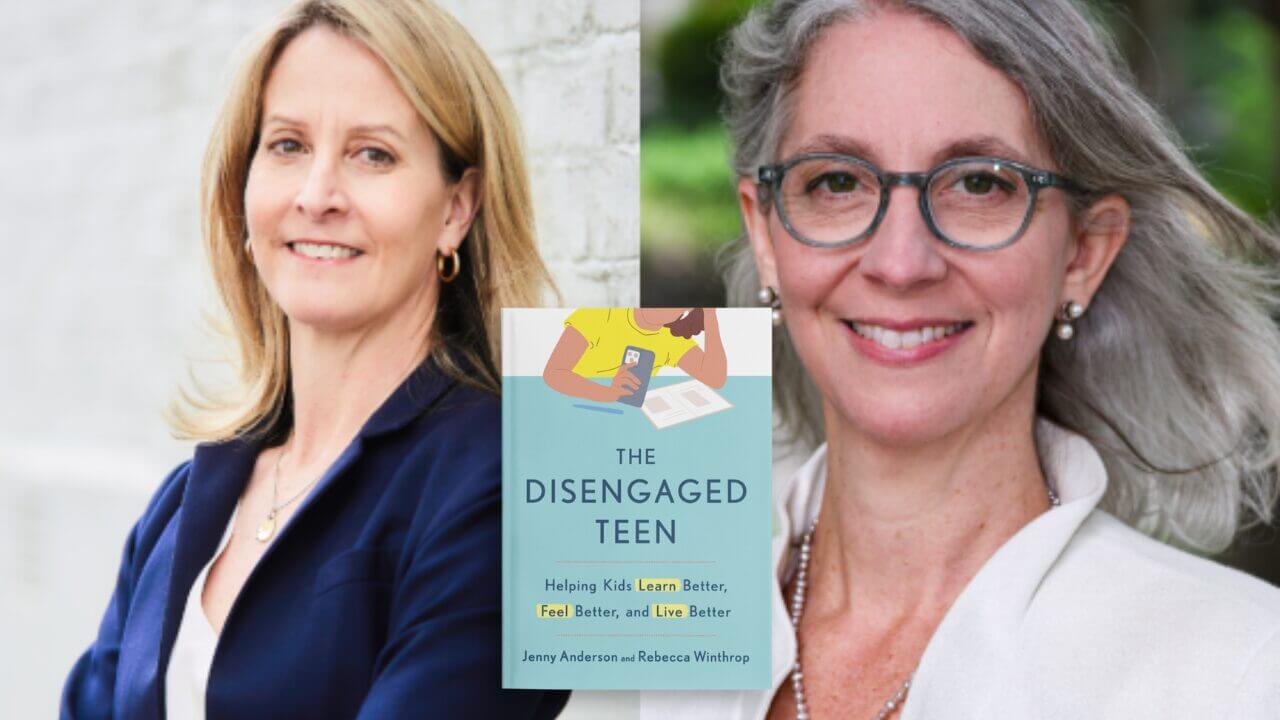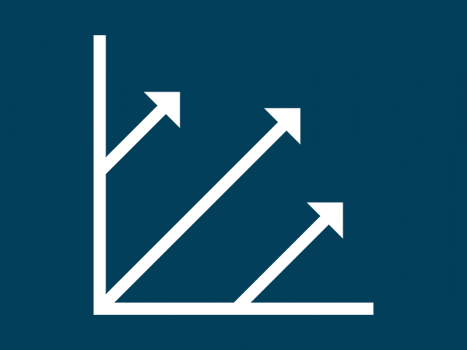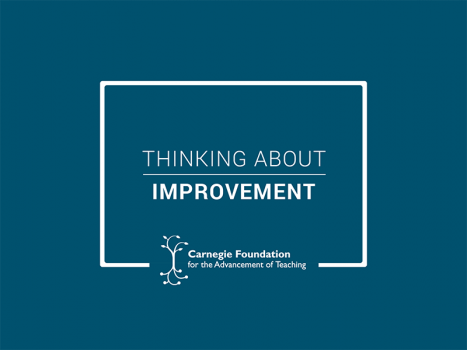For a quarter of a century, policymakers and educational practitioners have been quarreling. Educators accuse policymakers of creating top-down programs and laws that assume one size fits all, waste money, and make it harder for teachers to do their jobs. In response, policymakers observe that educational practitioners, despite substantial public investments, have been unable to produce needed improvements in student achievement, leaving no alternative to top-down solutions. And around and around they go.
Can this vicious cycle be broken?
In a recent Change article, “Rebuilding Confidence in Educational Leaders Through Evidence-based Practice and Policy,” I argue that educators and policymakers together have failed to develop the capabilities needed to achieve the higher levels of education achievement demanded in the 21st century. They need to change how they work, and they especially need to change how they work together.
Policymakers have seemingly lost faith in the ability of educators to achieve essential educational outcomes for today’s students, who, increasingly are becoming more racially and ethnically diverse, more likely to live in poverty, and more likely to be English language learners. The policy-driven standards and accountability movement has increased expectations of academic rigor in public education as measured by standardized tests. Layered on this are policies that require more accountability for the performance of student subgroups, as well as other equity-based policies such as mainstreaming students with special needs in response to the Americans with Disabilities Act.
Most practitioners agree with policymakers that equity, academic rigor, and 21st century student readiness are desirable goals for public education. But there is no consensus on how to achieve those goals. What should be evidence-based deliberations have instead descended into a public blame game that has incited battling bloggers and clashing advocacy groups over the past few decades.
Some policymakers make punching bags out of what they believe is an abundance of “bad teachers” and a “broken education system.” Teachers’ unions counterpunch that “practitioners are not allowed to do their jobs” and that demoralization from being labeled as unprofessional, unskilled, and unsuccessful degrades performance and drives talent from the profession.
Teachers point out that policymakers have pushed down countless silver-bullet reforms designed to improve public education with limited or no success: the standards movement, No Child Left Behind, charter schools, vouchers, magnet schools, class size and school size reduction, business and political leaders assuming leadership positions previously held by educators.
The most problematic of reform efforts seem to be driven not simply by dissatisfaction with the system’s performance, but by a lack of faith that the system can improve from within. Lawmakers have also forced a “solutionitis” approach on practitioners by insisting that evidence-based programs and interventions — as defined solely by randomized controlled trials and studies with similar methodologies — be rolled out across schools and districts, without regard to the enormous variation that exists across and within local settings.
This profusion of one-size-fits-all interventions to solving complex problems has not yielded the desired results in the public education system. Standardized test scores have stubbornly remained stagnant over the past few decades. In no case, do they demonstrate the improvement that is necessary to address the fierce urgency of students’ and society’s needs. Still, advocates and opponents continue to duel using inconclusive and narrow evaluations.
The problem is not simply that a broken public education system needs reform. Nor is it simply that policy leaders are pushing misguided actions. The problem is that the educational system lacks both the policies and practical knowledge and skills required to achieve better outcomes. The unproductive impasse will persist until both educators and policymakers change what they do and how they work together.
The impasse will persist until both educators and policymakers change what they do and how they work together.
First, policymakers must realize that politics alone can’t fix education. Top-down, standardized reforms, whether they be accountability systems, killer apps, or market-based competition, cannot improve student outcomes at scale. What works in one setting all too often does not work in other settings. The educational challenges of scale and variability can’t be addressed by inflexible fixes that ignore the realities of educational practice. Although markets work well for some things, the degree to which the educational marketplace is competitive is not the most important characteristic of successful education systems. Other factors are far more prevalent in the countries and school systems with high educational achievement.
Second, educators must develop stronger capabilities and approaches in order to achieve the higher levels of student attainment required in the 21st century. This is not new. Throughout its history the educational system of the United States has become increasingly more universal and more productive in order to meet changing national needs. The teaching-as-art isolationism of the past was adequate when the primary task was sorting and selecting to identify the most talented students. It is not the answer in the 21st century, and it is an inadequate response to failed top-down policy approaches.
Educators want — and need — focused, well-articulated learning objectives, ways to measure student progress and identify obstacles, and improvement methodologies that help them identify high priority problems, and rapidly test and adapt interventions to generate success in their own settings with their own students. Higher quality and more widespread educational achievement requires more effective practice, guided by evidence directly relevant to the practice setting.
Finally, policymakers need to learn how to improve practice with better policies, not to substitute policy for practice. Existing “command and control” policies embedded in law impede innovation and improvement in teacher education and school practices. Established budget allocations frequently sustain support for the status quo and deny the resources and the flexibility that are essential for improvement.
Fundamentally, government has only two tools at its disposal — regulation (law) and money. These are blunt instruments, but they play important roles. Evidence should guide policy in two primary ways: to identify priorities requiring the investment of resources, and to test whether laws and regulations are necessary and effective in achieving the desired outcomes. For complex problems, such as increasing educational attainment, investing in the improvement of practice is a much better bet than increasing the regulation of practice.
Educational improvement demands policy investments that build and support the capabilities of practitioners. These include policies to attract, train, and retain talent in the field, and policies that build the skills and offer the flexibility practitioners need to identify high-leverage problems and partner with education researchers to design, rapidly test, adapt, and improve promising interventions in local settings.
Complex problems such as education, health care, and even national defense, require a partnership between policy and practice. Effective policy must create the conditions and provide the support necessary for continuous improvement in communities of practice. As I argue in “Proof,” Policy, and Practice: Understanding the role of Evidence in Improving Education, the effective use of research and evidence for improvement requires both policymakers and practitioners to fully embrace the complexity, context, and human agency involved in public education. Both must employ evidence to improve what they do, neither will find simple solutions to complex problems, and both must find ways to collaborate as partners.
Recommendations for Policymakers
- Recognize the limits of policy and the need for policy to encourage and support sophisticated practice.
- Employ evidence to identify priorities for investment and evaluate existing policy.
- Enact policies to invest in talent and the capabilities of practitioners and scholars to become disciplined and effective in using evidence for improvement.
Recommendations for Practitioners
- Accept the responsibility for achieving better outcomes through more effective practice.
- Establish clear, measurable objectives for practice and demonstrate the commitment and capability for improvement by designing, testing, and adapting interventions to improve outcomes.
- Partner with policymakers to develop supportive policies and effective practices.
About the author
Paul Lingenfelter is president emeritus of the State Higher Education Executive Officers Association.
June 27, 2016
In a session on leading the transformation of large complex systems at the 2016 Carnegie Summit, three superintendents discuss how they shaped improvement in their school districts by adopting strategies that resonate with three of the principles of improvement science.
November 14, 2016
Policy can do a lot to support positive changes, but policy alone isn’t effective in such large, diverse, and complex arenas as education, wrote policy analyst Paul Lingenfelter in comments solicited by the federal Commission on Evidence-Based Policymaking.







